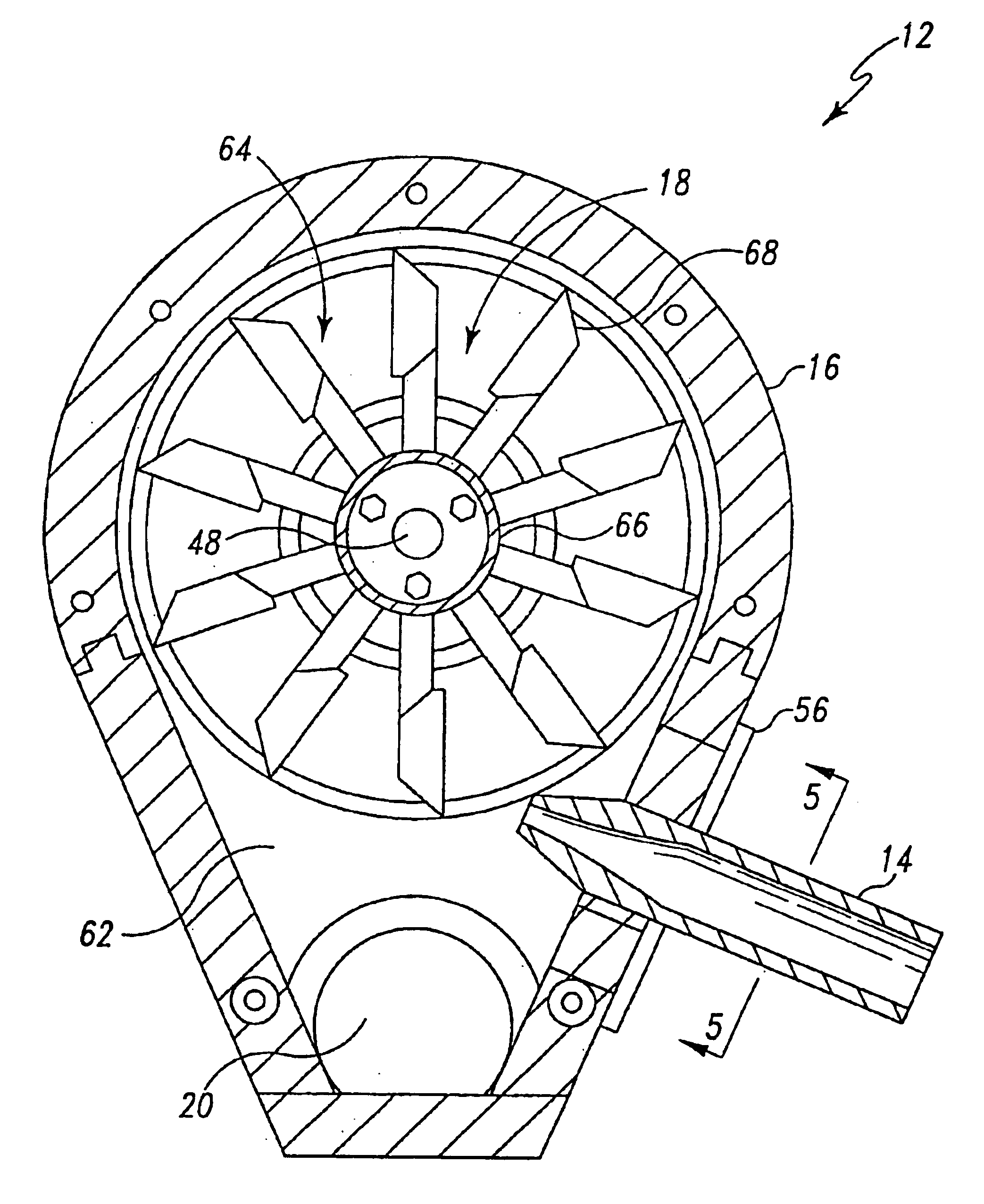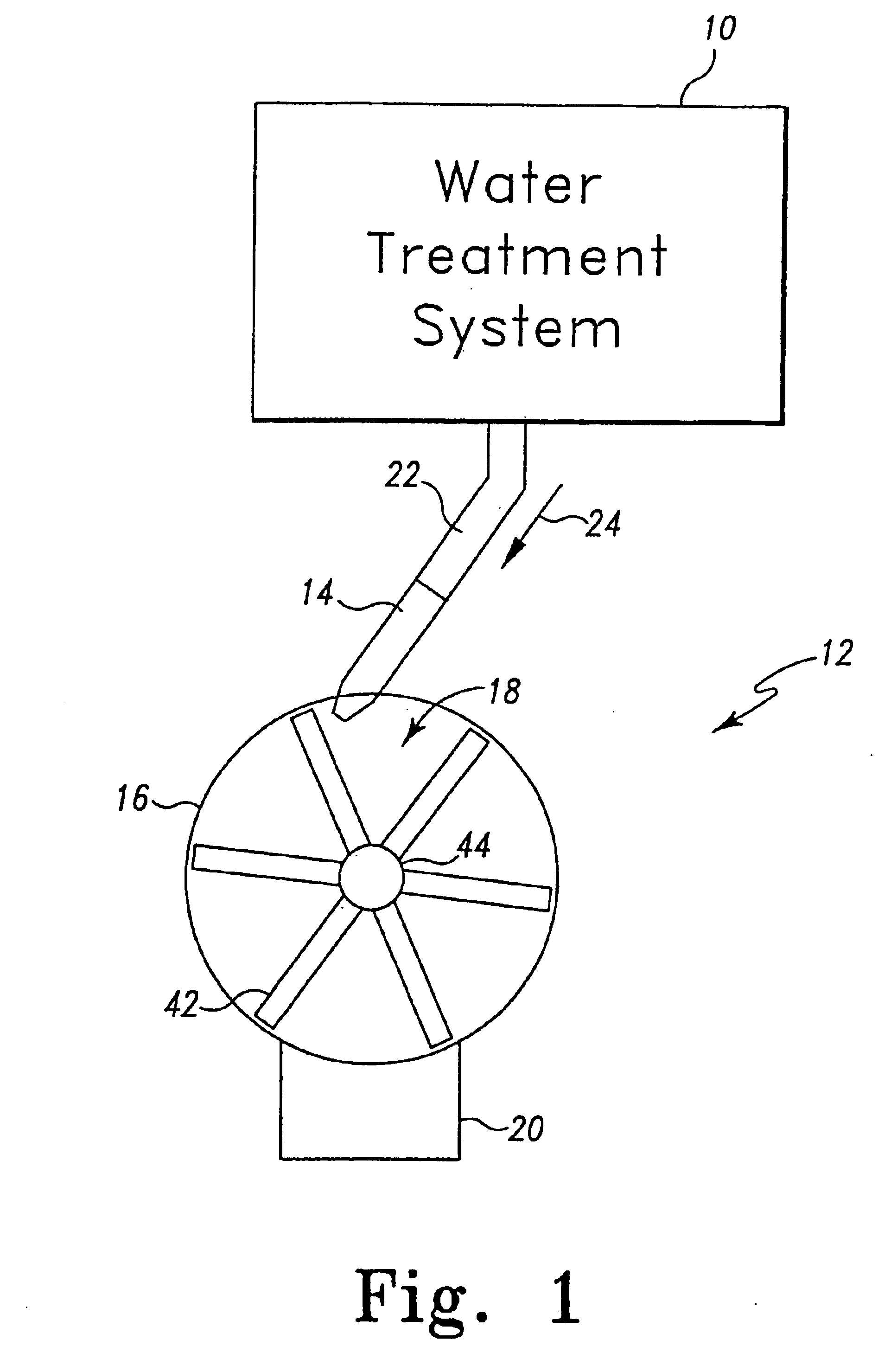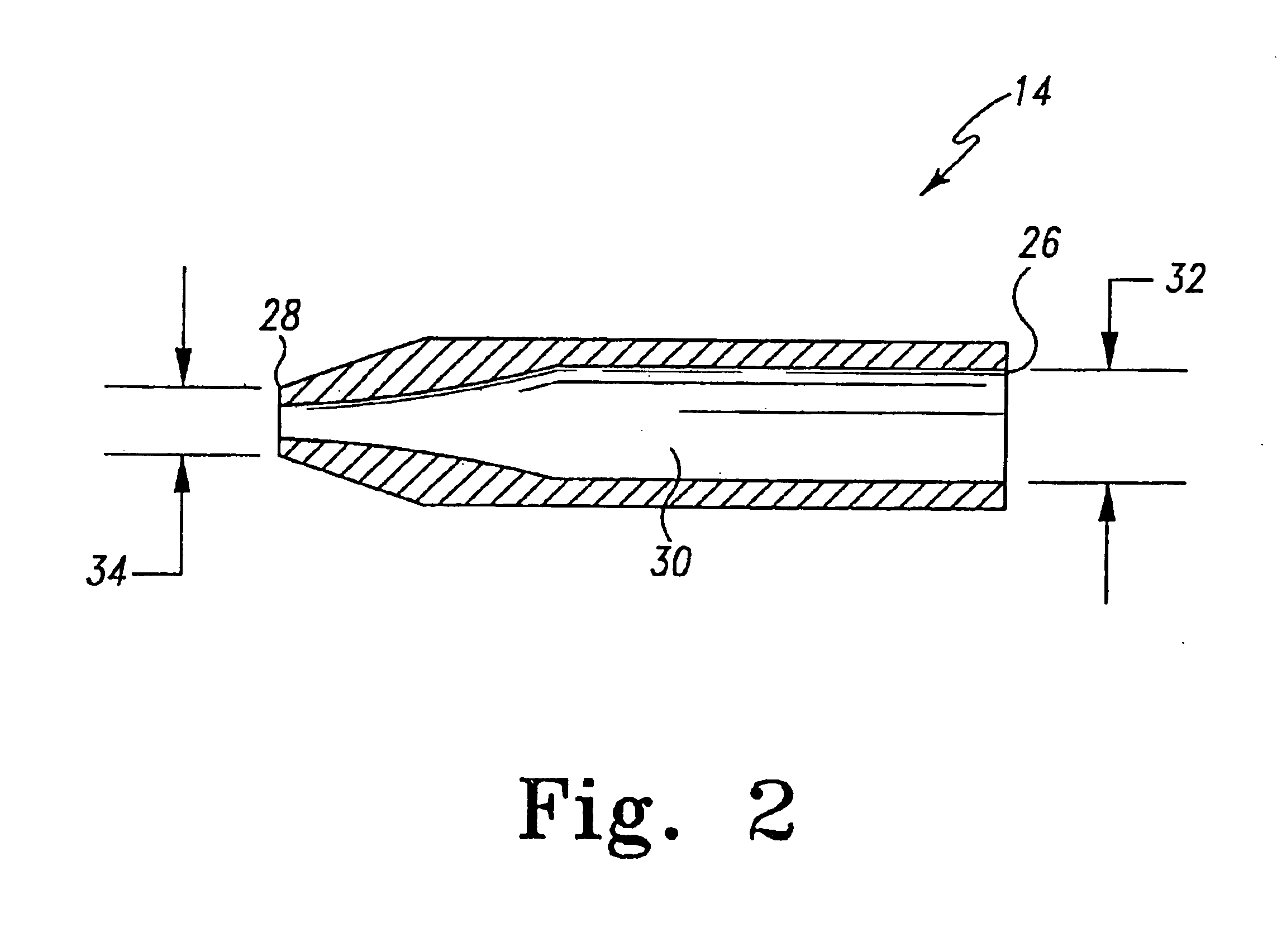Miniature hydro-power generation system
a hydro-power generation system and miniature technology, applied in the field of electric power generation, can solve the problems of system portability, reduced electric power produced, and reduced capacity of hydro-electric power generation equipment, and achieve the effects of reducing losses, reducing costs, and efficient provision of sufficient power to opera
- Summary
- Abstract
- Description
- Claims
- Application Information
AI Technical Summary
Benefits of technology
Problems solved by technology
Method used
Image
Examples
Embodiment Construction
[0046]The exemplary embodiments of the invention are set forth below with reference to specific configurations, and those skilled in the art would recognize various changes and modifications could be made to the specific configurations while remaining within the scope of the claims. The presently preferred embodiments may be used with any system that requires a power supply and includes a water flow; however, the embodiments are designed for systems such as a water treatment system for residential or portable use, a plumbing fixtures, etc. Those skilled in the art would also recognize that the embodiments could be used with liquids other than water and use of the term “water” and “hydro” should not be construed as a limitation.
[0047]FIG. 1 is a side view of a water treatment system 10 connected with a preferred hydro-power generation system 12. In this embodiment, the hydro-power generation system 12 includes a nozzle 14, a housing 16, an impeller 18 and a housing outlet 20. The noz...
PUM
| Property | Measurement | Unit |
|---|---|---|
| diameter | aaaaa | aaaaa |
| diameter | aaaaa | aaaaa |
| flow trajectory angle | aaaaa | aaaaa |
Abstract
Description
Claims
Application Information
 Login to View More
Login to View More - R&D
- Intellectual Property
- Life Sciences
- Materials
- Tech Scout
- Unparalleled Data Quality
- Higher Quality Content
- 60% Fewer Hallucinations
Browse by: Latest US Patents, China's latest patents, Technical Efficacy Thesaurus, Application Domain, Technology Topic, Popular Technical Reports.
© 2025 PatSnap. All rights reserved.Legal|Privacy policy|Modern Slavery Act Transparency Statement|Sitemap|About US| Contact US: help@patsnap.com



